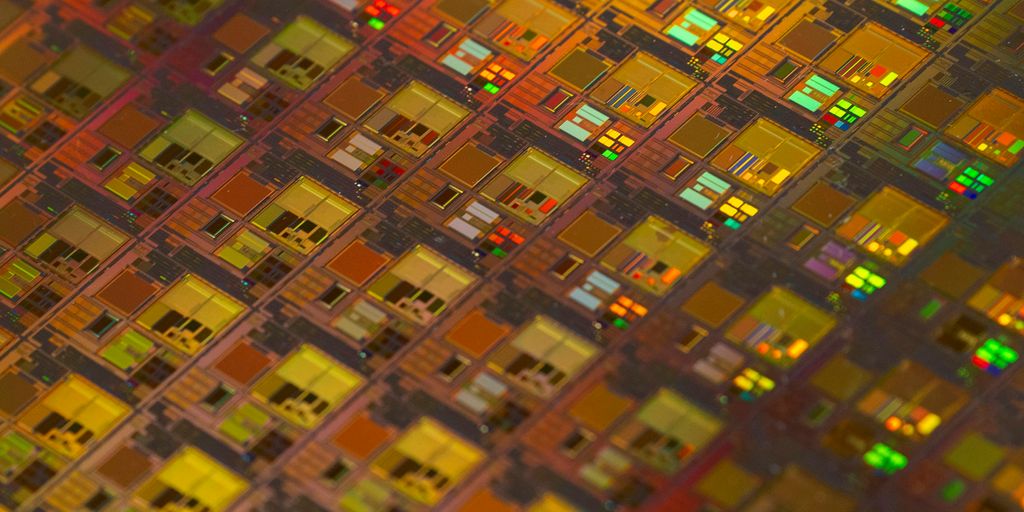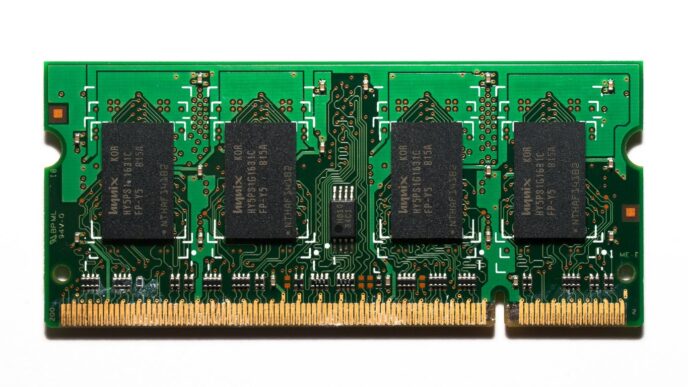TriQuint Inc. was a big name in the semiconductor world, especially when it came to advanced materials. They really pushed the limits of what was possible with things like gallium arsenide and gallium nitride. Before they became part of Qorvo, TriQuint Inc. made a lot of important contributions to radio frequency technology and had a solid spot in the market. This article looks back at their story and how they changed the game in semiconductors.
Key Takeaways
- TriQuint Inc. was a leader in developing advanced semiconductor materials like gallium arsenide and gallium nitride.
- They played a big role in making better radio frequency parts for many different uses.
- TriQuint Inc. was a key supplier for important systems, including military radar.
- The company joined with RF Micro Devices to create Qorvo, forming a major force in the industry.
- TriQuint Inc. started as a spinoff and grew into a company known for its new ideas in semiconductor manufacturing.
TriQuint Inc.’s Pioneering Semiconductor Technologies
TriQuint wasn’t just another company making chips; they were really pushing the boundaries of what was possible with different materials. They were always looking for ways to make things faster and more efficient. It’s interesting to see how they approached these challenges.
Advancements in Gallium Arsenide
TriQuint made some serious progress with Gallium Arsenide (GaAs). GaAs is great because it lets signals move faster than silicon, which is super important for radio frequency (RF) stuff. They figured out how to make better semiconductor fabrication plants using GaAs, which led to smaller and more powerful devices. It wasn’t easy, but their work really paid off in the long run. They were a leading supplier of semiconductor technologies.
Innovations in Gallium Nitride
Then came Gallium Nitride (GaN). GaN can handle way more power than GaAs, which is a big deal for things like radar and high-power amplifiers. TriQuint was right there at the front, figuring out how to make GaN work reliably and efficiently. They were really good at developing advanced filter expertise. It’s amazing how much better things got because of their work with GaN.
Beyond Silicon: High-Performance Materials
TriQuint didn’t stop at GaAs and GaN. They were always checking out other materials that could do things silicon couldn’t. This meant exploring new ways to make chips that were faster, smaller, and more power-efficient. They were pushing wafer assembly boundaries. It’s this kind of thinking that really set them apart. They had a long heritage as leaders in the RF solutions space.
TriQuint Inc.’s Impact on RF Solutions
TriQuint wasn’t just making chips; they were seriously shaping how radio frequency (RF) tech worked. They were a big deal in making sure our devices could talk to each other, especially when it came to things like cell phones and military stuff. It’s interesting to see how their work still affects things today.
Leadership in Radio Frequency Components
TriQuint was a major player in radio frequency technology. They made a ton of different parts that are used in all sorts of devices. Their components helped improve signal strength and reduce interference, which is super important for clear communication. Think about it – every time you make a call or use your phone’s data, there’s a good chance TriQuint’s tech was involved somehow. They were always pushing the limits of what was possible, which helped the whole industry move forward.
Developing Advanced Filter Expertise
Filters are key in RF systems because they clean up the signals, getting rid of unwanted noise and interference. TriQuint got really good at making these filters, which meant devices could work better and more reliably. They worked on different types of filters to handle various frequency ranges and applications. This expertise was a big part of what made them a leader in the RF world. It’s kind of like having a really good audio engineer making sure everything sounds perfect.
Meeting Demands for High Frequencies
As technology gets better, we need higher and higher frequencies to transmit more data. TriQuint was right there, developing solutions that could handle these demands. They were always working on new materials and designs to push the limits of what their components could do. This meant that things like 5G and advanced radar systems could become a reality. It’s like they were building the high-frequency components for the future of communication.
TriQuint Inc.’s Strategic Market Presence
Key Supplier for Military Radar Systems
TriQuint carved out a significant position as a go-to source for semiconductor tech used in military radar. It wasn’t just about supplying parts; it was about providing reliable, high-performance solutions for critical defense applications. This established trust and reliability were key to their success in this sector. Think about it – military applications demand the best, and TriQuint consistently delivered. They became known for their quality and innovation in meeting the stringent requirements of military radar systems.
Contributions to Handset RF Technologies
Beyond defense, TriQuint played a big role in the evolution of handset radio frequency (RF) tech. They were involved in making cell phones smaller, faster, and more efficient. It’s easy to forget how much technology goes into making a phone call, but TriQuint was right there, developing components that improved signal strength and battery life. Their work helped push the boundaries of what was possible in mobile communication. It’s interesting to see how their innovations impacted the handset RF technologies we use every day.
Expanding Semiconductor Capabilities
TriQuint didn’t just stick to one area; they were always looking to grow their semiconductor capabilities. This meant investing in new materials, processes, and designs. They aimed to be more than just a component supplier; they wanted to be a complete solution provider. This drive to expand allowed them to serve a wider range of markets and stay ahead of the competition. Their focus on expanding semiconductor capabilities really set them apart.
The Merger That Formed Qorvo
It’s easy to wonder how Qorvo came to be. It wasn’t built from scratch, but through a strategic combination. The company was created in 2014 by uniting TriQuint Inc. and RF Micro Devices (RFMD). This merger wasn’t just about getting bigger; it was about bringing together different strengths to make something new.
Uniting TriQuint Inc. and RF Micro Devices
TriQuint, a Tektronix spinoff, had a solid background in gallium arsenide (GaAs) technology. RFMD, on the other hand, focused on RF design. By merging, they aimed to create a more complete RF solutions provider. It’s like combining the ingredients for a great recipe – each company brought something essential to the table. The semiconductor company was born.
Complementary Strengths in RF Solutions
TriQuint’s expertise in materials like GaAs and Gallium Nitride (GaN) complemented RFMD’s RF design skills. This allowed the new company to tackle a wider range of RF challenges. Think of it as having both the raw materials and the engineering know-how under one roof. This combination was especially important as the demand for higher frequencies in wireless devices increased. They also had integrated manufacturing capabilities with external foundries.
Creating a Semiconductor Powerhouse
The merger created a major player in the semiconductor industry. Qorvo’s scale allowed it to compete more effectively in markets like mobile devices and defense systems. The combined company could invest more in research and development, driving innovation in RF technology. In fiscal year 2024, Qorvo’s revenue reached $3.77 billion, showing the impact of this union. It’s a story of two companies coming together to become something bigger and stronger than they were apart. The company’s strategic advantages are clear.
TriQuint Inc.’s Legacy of Innovation
From Tektronix Spinoff to Industry Leader
TriQuint’s story is pretty interesting. It wasn’t some startup born in a garage. It actually came out of Tektronix, which is a big name in test and measurement equipment. That initial connection to Tektronix gave TriQuint a solid foundation in engineering and innovation right from the start. It’s kind of cool to see how a company can evolve from one thing into something completely different, especially in the fast-moving world of semiconductors. They really made a name for themselves.
Early Focus on Digital GaAs Technology
One of the things that set TriQuint apart early on was their bet on Gallium Arsenide (GaAs) technology. Most companies were sticking with silicon, but TriQuint saw the potential of GaAs for high-speed digital applications. It was a risk, but it paid off. They became a leader in GaAs technology, which is now used in all sorts of things, from cell phones to military systems. It’s a good example of how being willing to try something different can lead to big success.
Pushing Wafer Assembly Boundaries
TriQuint wasn’t just about designing chips; they were also really focused on how to put them together. They were always looking for ways to improve wafer assembly techniques, which is a critical part of the manufacturing process. This meant things like developing new packaging methods and finding ways to make the chips more reliable. This focus on wafer assembly helped them to create products that were not only high-performing but also durable and cost-effective. They were always trying to push the limits of what was possible.
Financial and Operational Synergies Post-Merger

Projected Revenue and Savings
Okay, so after TriQuint and RF Micro Devices got together to form Qorvo, everyone was watching the money. The big promise? That the combined company would pull in over $2 billion in annual revenue. Plus, there was talk of saving at least $150 million a year through synergies. I remember reading that the gross and operating margins were supposed to hit 45% and 25%, respectively. It sounded great on paper, but you always wonder if those numbers will actually pan out. It’s like when you plan a budget, and then life happens.
Investor Confidence in the Union
When the merger was announced, the stock prices of both TriQuint and RFMD jumped. Like, double-digit jumps! That’s a pretty clear sign that investors thought this was a good move. People saw the potential in combining the strengths of the two companies. RFMD was strong in handset RF technologies, and TriQuint had a better portfolio of defense products. It made sense that putting them together would create something bigger and better. It’s always interesting to see how the market reacts to these kinds of deals.
Consolidating Capabilities for Growth
One of the best parts of the merger was how little overlap there was in the markets they served. This meant they could combine their strengths without stepping on each other’s toes too much. The idea was to strengthen their resolve around strategic benefits and really go after new opportunities. It’s all about finding ways to work smarter, not harder, and that often means streamlining operations and focusing on what you do best. Here are some ways they consolidated capabilities:
- Shared resources to cut costs.
- Combined research and development efforts.
- Streamlined manufacturing processes.
Wrapping Things Up: TriQuint’s Lasting Mark
So, when we look back at TriQuint, it’s clear they did some pretty cool stuff. They were a big deal in the semiconductor world, especially with their work in gallium arsenide. That tech was super important for all sorts of things, from your cell phone to military radar. Even though they merged with RFMD to become Qorvo in 2015, their original ideas and smart people really set the stage for what came next. It just goes to show how one company’s journey can really change a whole industry.
Frequently Asked Questions
What was TriQuint Inc.?
TriQuint Inc. was a company that made special parts for electronics. They were really good at making things called semiconductors, which are tiny chips that make electronic devices work.
What kind of technology did TriQuint Inc. use?
TriQuint was known for using special materials like gallium arsenide and gallium nitride. These materials are much better than regular silicon for making parts that work with radio signals, like in cell phones and radar.
Did TriQuint Inc. work with the military?
Yes, TriQuint made important parts for military radar systems. Their advanced technology helped make these systems work very well.
How did TriQuint Inc. become Qorvo?
TriQuint and RF Micro Devices (RFMD) joined together in 2015 to form a new company called Qorvo. They combined their strengths to become a bigger and more powerful company in the electronics world.
What were the benefits of the merger?
The merger created a company that could make over $2 billion a year. It also saved a lot of money, about $150 million each year, by putting the two companies’ operations together.
Where did TriQuint Inc. come from?
TriQuint started as a spin-off from another company called Tektronix. They began by focusing on digital gallium arsenide technology and kept pushing the limits of how tiny electronic parts could be made.














